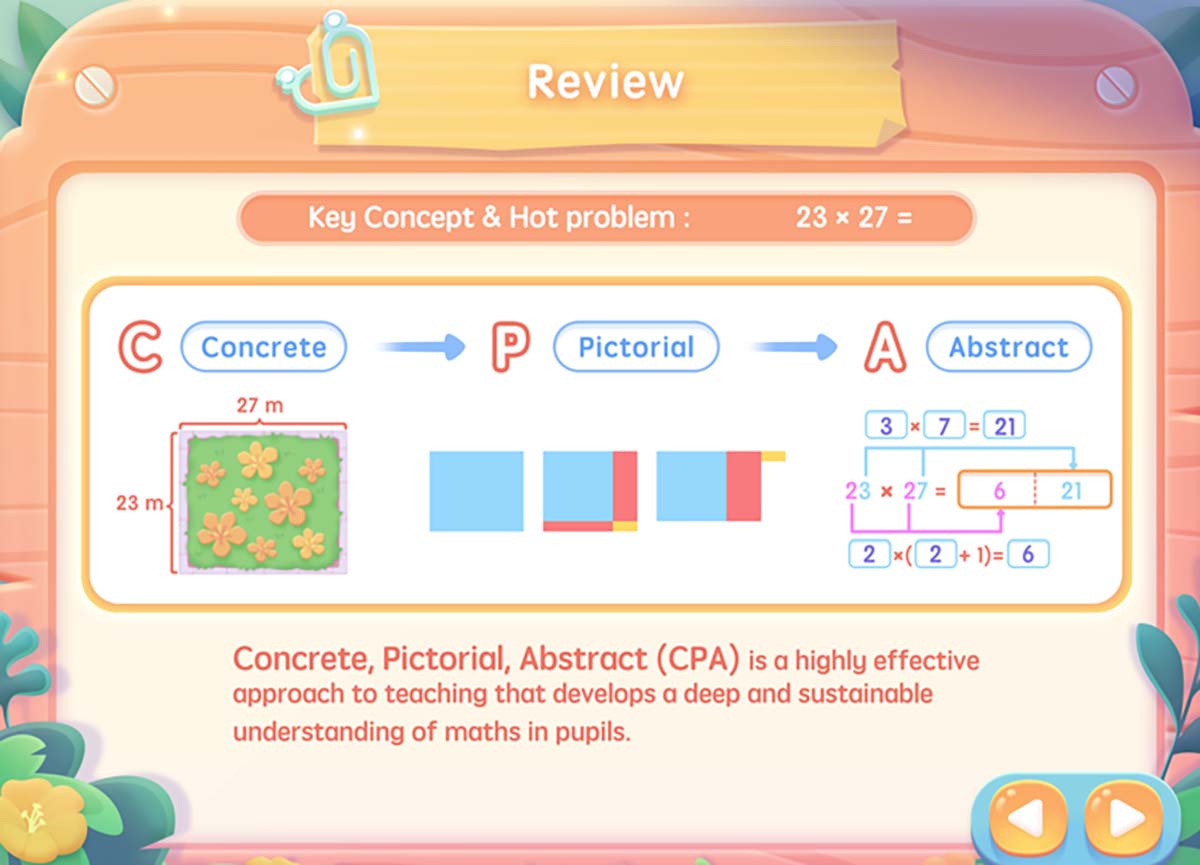
Do you know that you’re using basic math skills every day? People tap into math concepts in their daily life, whether they realise it or not. From setting an alarm for the morning, to following a recipe when you make dinner, math happens all around you. Math helps with some very important daily tasks throughout your day, such as practising addition when shopping with a budget, or calculating with fractions when you need to use half of a recipe.
Learning math is more than just passing tests. Math skills are needed for real-world applications. Students who understand how and why math works can use those skills in school, work, and even around the house. These instincts are missing for the many students learning math by rote memorisation, or learning by repetition. Rote memorisation can’t always help solve problems in the real world. It’s important to have a deeper idea of how math concepts work.
Spark Math is about helping children understand math and teaching them how to apply concepts beyond just memorising them. Since our inception, we have focused on prioritising students’ learning experiences and building fundamental problem-solving skills. We want to share with you how we spark a passion for learning and ignite lifelong growth, starting with our curriculum difference.
“The Spark Math Learning Explained Series” is a 3-part series that gives an overview of the different learning methods Spark Math courseware is made of. Our curriculum is built to help children look at math in a different way. Developed by a team of education experts, Spark Math’s proprietary curriculum finds the best ways to help children understand, absorb, and build practical skills in math. Here’s the first in our series: Spark Math and the CPA Approach.

What is the CPA Approach?
Doing mental math is tough. For many methods of learning, children are only taught to memorise equations and recall them later. This method often results in students knowing how to solve equations but being unable to apply those skills to deeper concepts.
Math can be hard to grasp without any physical real-world connections. The CPA Approach, which stands for Concrete, Pictorial, and Abstract, helps connect math concepts to real-life situations and physical objects. The method is all about hands-on learning, knowing the mechanics of math problems, and not just recalling answers.
Developed by American psychologist Jerome Bruner, the teaching method takes non-physical math concepts (like counting, equations, etc.) and relates them to real life. The first goal is to start off with physical objects, like counting apples or oranges (Concrete). The second step is to take those physical objects and represent them in pictures and videos (Pictorial). Finally, after having a better idea of concepts in a physical and visual way, students start learning math concepts in a non-physical way (Abstract). The CPA Approach can help students learn new math concepts in a way they can embrace. Each step is essential and brings children closer to mastering math.

Concrete
It’s easier to understand things when you can hold and feel them. Many math equations for younger children often have physical objects to represent a problem. “Jimmy has 3 apples and eats 1. How many apples does he have left?” These questions make sense because people know what an apple is, and you can touch and count apples right in real life. This takes the mental action of counting and gives it a real-world representation. The CPA Approach starts with introducing concepts that can be seen and touched. Students learn math concepts, not by being told to memorise the answers, but by doing the actions themselves. By understanding how math works with real things, the next step is to take learning from physical to visual.
Pictorial
As the saying goes, a picture is worth 1000 words. There’s a reason math worksheets with illustrations are so popular with younger children. Once a child has interacted with a math concept in the real world, the next step is for those real items to be represented visually. The simplest version of this is showing the apple equation, with pictures instead of real apples. Worksheets can show the objects that need counting but also include an interactive portion. Students can count an image of apples, and start building variety in how they learn. Math worksheets can include fun puzzles, colouring images, and other interactive ways to draw children into learning.
Learning visually isn’t just about math worksheets anymore. Online math games make visual learning interactive and engaging. Games can be tailored to children’s existing interests. Some children would rather count soccer balls than apples or want the help of some fun characters (like Spark Math’s flagship mascot trio: Abby the Bunny, Benny the Monkey, and Casey the Mouse). Games and worksheets aren’t the only options. Cartoons, comics, workbooks, and so many more educational items help transition math from the real world to doing it mentally. Students start to visualise math problems in their heads. They become ready to move from the visual step to the abstract step of learning math.
Abstract
It can be hard to explain exactly what the “Abstract” means to a child. The word literally means “Existing in thought or as an idea.” For children, math can’t just start as an idea, they have to connect those thoughts to real-world things. Once a child understands counting physical objects and how images can represent those same objects, they can move forward. Now, we take those core math ideas and have them represented by ideas and symbols. The word problem about apples goes from physical objects to pictures representing those objects, and then to a simple equation, 3 – 1 = 2. This equation is the abstract explanation of a bigger story, but they represent the same thing.
Instead of rote memorisation, students have learnt why math problems make sense. It’s one thing to remember the times tables, but another to visualise how multiplication work. Math is a skill where the concepts build upon themselves. Having a stronger understanding of early arithmetic will help with higher math concepts in the future. You will still use the math you learn as a child in the most advanced math. The CPA Approach helps develop a comprehensive understanding of abstract math concepts.

How Spark Math Uses the CPA Approach
Spark Math by VISPARK integrates the CPA Approach into classes to help create a stronger connection between how students understand math concepts. Live teachers incorporate animated videos, gamified learning, and art to introduce background stories to each day’s lesson. Each story stars Benny and his friends. The story works with the lesson to cover new math concepts in every class.
Through the storylines, children connect with the learning objectives of the day, while also going on an adventure. Children do activities and use visual representations to help them understand abstract math concepts, gaining a deeper and more sustainable understanding of math that brings them beyond rote memorisation. The CPA Approach helps make children excited about the new skills they can use. After the story, students start learning from real-world math problems with relatable backgrounds.
When explaining these problems, teachers will use guided questions to help students find the solution. The goal isn’t to give children the answers but to help them solve problems themselves. Spark Math’s teachers support the math adventures their students are on. The confidence that comes with working out problems themselves creates excitement for the next class and the next adventure.
Now that they have the knowledge to solve problems, it’s time to learn a way to tackle math problems to make sure they get the right answer, with the USDC Approach. Check out Part 2 for more.
Classes are for children ages 3 to 11. Learn more about how Spark Math by VISPARK helps to grow math scores and make learning fun for your child! Sign up for a FREE trial class and let your child master math concepts with us.




